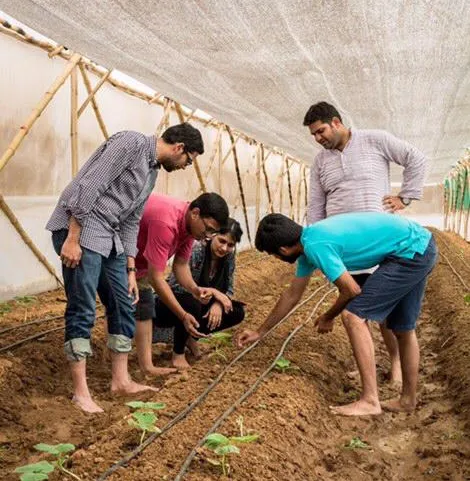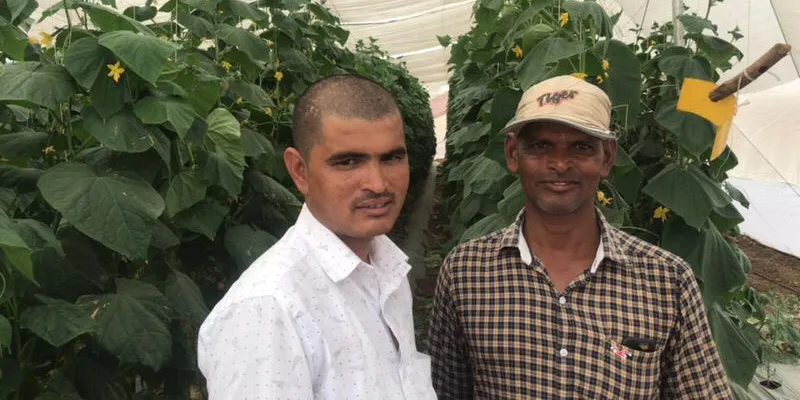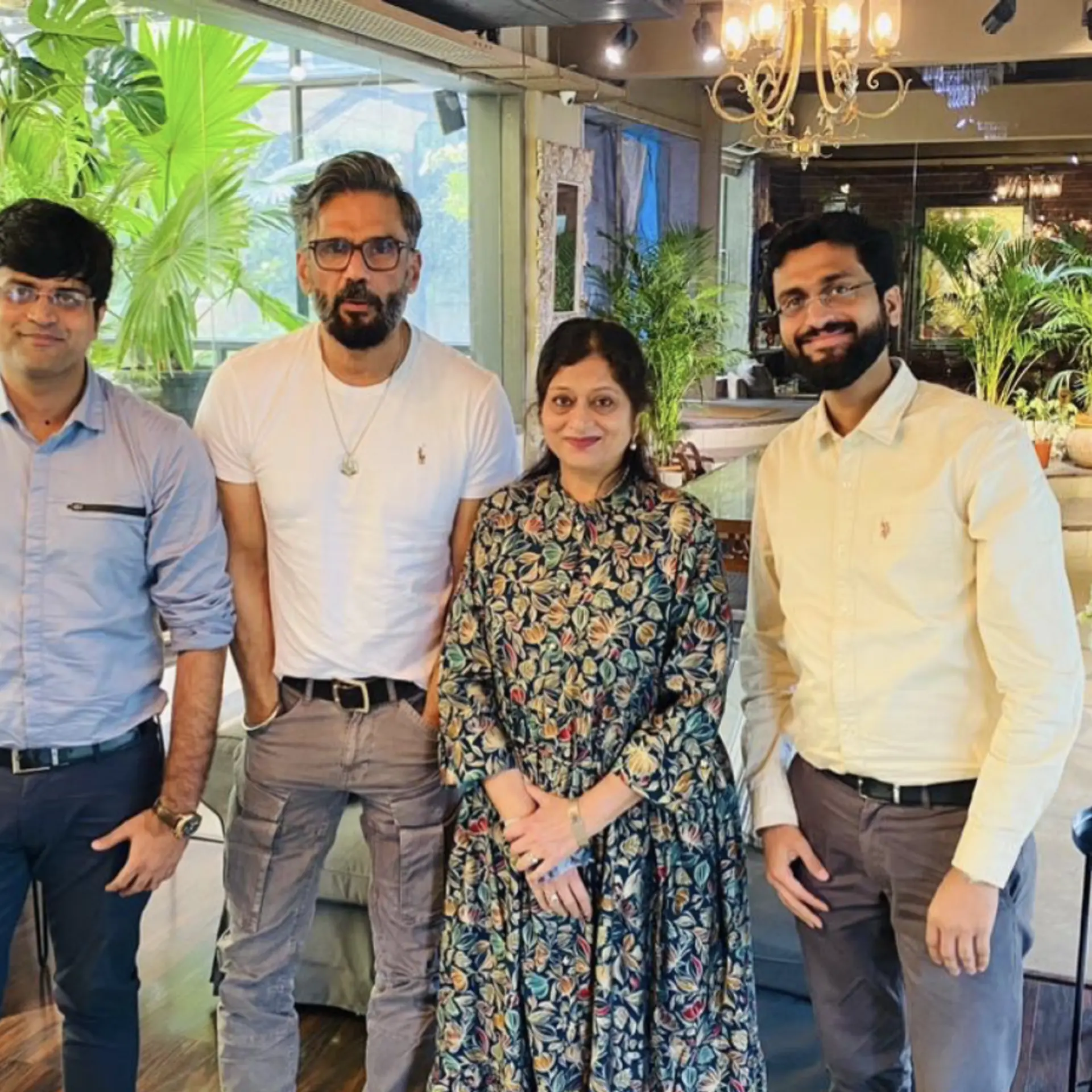As India faces its worst water crisis, why we need to look at startups like Kheyti
Today, 600 million Indians face high to extreme water stress in India - a problem acutely felt by farmers all over the country. Hyderabad-based Kheyti is one of the startups that can help.
In a recent tweet, Prime Minister Narendra Modi stressed upon the vitality of increasing water use efficiency through sprinkler and drip irrigation, including in sugarcane cultivation.
This comes in the wake of the most severe water crisis that India is facing today, especially with our headlines full of Chennai's ongoing water scarcity. According to a recent study by government think tank NITI Aayog, nearly 600 million Indians face high to extreme water stress, with about two lakh people dying each year because of inadequate access to safe water. And the crisis is about to get worse.
The report adds that by 2030, India’s water demand will be twice its available supply, leading to severe water scarcity for hundreds of millions of people and an eventual loss of up to six percent in the country’s GDP.
Groundwater availability, which accounts for about 40 percent of India's water supply, is getting depleted at an 'unsustainable' rate and about 70 percent of our water supply is contaminated resulting in illness, or worse, death. But the biggest impact of this water crisis is acutely lived and felt by the farmers of our country.
And as the government and various stakeholders seek larger enterprises to solve the issue, I would urge them to look at our startups too. For example, sowing the seed for farmer revolution is Hyderabad-based Kheyti, founded by Sathya Raghu V Mokkapati, Kaushik Kappagantulu, Saumya, and Ayush Sharma.
Sathya believes water conservation is most needed now. Saying that his solution, Greenhouse-in-a-box (GIB), can achieve this goal, the CA-turned-entrepreneur wants his product to reach all farmers in the country.
In a chat, we talk about how farmers can grow more by spending less water and how we can address the water problem.
Edited excerpts from the interview.
Shradha Sharma: How can Kheyti help farmers produce more with less water?
Sathya Raghu: Kheyti uses drip irrigation and there are four layers on it to prevent losses through evaporation. Hence, using just 1,000 litres of water in a day, which is as little as domestic consumption of a family of five, farmers can grow beautiful and safe vegetables.
There is a 98 percent of savings in agricultural water for the same crop yield by using a greenhouse vs in an open field.
SS: How much is the cost of one Greenhouse-in-a-box (GIB)?
SR: The price of the greenhouse ranges from Rs 1.6 lakh to Rs 3 lakh per unit, based on the size. Our smallest greenhouse sits in 2,000 sq ft (1/16th of an acre) and the largest one sits in 5,000 sq ft (1/8th of an acre). This includes an installed greenhouse, a drip irrigation kit, and seeds and fertilizers for the first growing season.

The founders of Kheyti in action
SS: Why do you believe Kheyti can be a good solution for the farmers in India?
SR: There are three reasons we believe we provide the best solution in the market.
1) We are the only one in the country offering a climate-smart agricultural solution to smallholder farmers to help them grow vegetables in a greenhouse and get a reliable income.
2) We have reduced the cost by 40 percent with our R&D when compared to others. We supply this "lifesaving and life-changing technology" for the smallholder farmers at a price, which is 40 percent less than the market.
3) We are also the only one in the country providing farm services along with greenhouses like expert inputs, financing, training, and market linkage. This creates a seamless experience for the farmer. The right technology and farm services can give a permanent path out of poverty.
SS: What is your take on the water crisis in India?
SR: It is real and here to stay. It is getting worse season after season, thanks to climate change. Farmers have just 20 percent of the water they need to do open farming. This gap between demand and supply should be addressed from both sides. Work should happen on how we can increase the supply with irrigation projects, check dams, and water harvesting.
At the same time, reduce demand from farmers by introducing greenhouse and drip irrigation, along with end-to-end guidance for the farmer. Our idea is to reach smallholder farmers through farmer collectives and groups.
We have built a model that works regardless of any government subsidy. So, if governments can act smartly by supporting such solutions, the lasting impact can be generated at scale without giving away freebies.

Kheyti's Greenhouse-in-a-Box
SS: On average, how much water do farmers use otherwise?
SR: Farmers use about 50,000 litres per day for vegetables and more than 100,000 litres a day for an acre of paddy. On average, agriculture accounts for 70 percent of global freshwater withdrawals.
SS: How many farmers have benefited from your product?
SR: We completed proof of concept in 15 villages with about 150 farmers in December 2018. After seeing the success, we have now signed up 500 more families for this year.
The idea is to reach 100,000 farmer families by 2025.
SS: Isn’t the price a little prohibitive for small farmers?
SR: Farmers need to pay about 10 percent of the cost today to access our solution. The rest is financed by the bank and farmers can "pay as they grow".
So, the Rs 10,000 to Rs 30,000 that they need to invest is comparable to what they invest every season in open farming. But this is a one-time investment, which will generate benefits for over 15 years and beyond.
And Sathya is not wrong.

Farmers using Khyeti's Greenhouse-in-a-Box.
G Venkat Swamy Dachram, a farmer in Siddipet, tells me,
“I have 3.5 acres of land and I have been growing vegetables for the past 15 years. Kheyti’s greenhouse uses only a small drum of 1,000 litres of water and still make more money. Because of this, I am able to get a revenue of Rs 70,000 in three months in five gunthas (1/10th of an acre) of land. I have never seen such revenue in my life in the summer season.”
It’s time to get everyone in the country to come together and rewrite India’s water story. I urge all startups to send your suggestions and if you know someone who is doing a great job in this area, do write to us. Let’s participate.
And, if you are a startup solving water problem reach out to us, we will amplify your mission and voice.








